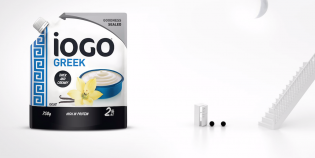Chevron has been stung by of a group of pranksters that have flooded social media with official-looking but false PR and media reports. They’re just the next victim in a long line of corporations who have fallen victim to this new kind of protest.
The hoax that Chevron is now grappling with is far more elaborate and is timed to the launch of an ad campaign from the San Ramon, Calif.-based company and its lead agency, Dentsu-owned McGarryBowen.
The site looks real, but the press release is a sham.
The new ad campaign–the real one–is the sort of a we’re-a-different-kind-of-oil-company messaging that invites the ire of critics decrying past and current business practices and environmental disasters. The spoof seems to be centered on an ongoing legal dispute in Ecuador as part of which Chevron was accused of contaminating the Amazonian rain forest.
Not only was a fake website created that parodied the real campaign, but fake press releases were sent out, including one posted to a site that looks remarkably similar to Chevron’s actual website. That release uses fake quotes by Rhonda Zygocki, Chevron’s vice-president of policy, government and public affairs, and Gordon Bowen, chief creative officer of McGarryBowen.
As part of the prank, there was even a fake story planted on a fake Ad Age site.
Between that and all of the fake press releases floating around–one of which claimed Ad Age had been “duped” by some level of the Chevron spoof–it prompted confusion not only for Chevron, but for some media outlets that had trouble determining who was spoofing what.
Among those who were fooled by were Southern California Public Radio and Fast Company magazine. An update to Fast Company‘s post admitting that the magazine was fooled cited activist prankster group The Yes Men as the perpetrators.
Requests for comment submitted to The Yes Men’s website were not immediately returned. McGarryBowen execs also could not be immediately reached for comment. A Chevron spokesman, Morgan Crinklaw, would not speculate on who was responsible, but did say that The Rainforest Action Network, an environmental activist group, has claimed credit in some media stories.
“Unfortunately, there are some out there that are not interested in a constructive dialogue and they have resorted to stunts and it’s interrupting the conversation by issuing these fake press releases and counterfeit websites for the sole purpose of attacking Chevron and not engaging in rationale dialogue,” Crinklaw said. Now, Chevron has had to tap staffers to monitor the conversation online so it can immediately address any inaccurate information that appears on blogs or other social-media sites.
The issue of fake PR is one that doesn’t seem to be going away anytime soon, and it remains to be seen if marketers and agencies can figure out a way to effectively combat the seemingly greater number of individuals who seem eager to participate in such efforts.
Marketers aren’t the only ones being hit by fake PR efforts–as shown by the website for Heishman Hillard, a spoof of PR agency Fleishman Hillard.
“It’s an increasingly troubling issue,” said Gene Grabowski, senior VP, Levick Strategic Communications. “We live in a time when some of the most trusted names in news are satire shows like The Daily Show, The Onion and The Colbert Report. We live in an era where satire is now the news source for people. And recently Colbert testified before congress, so increasingly consumers don’t know the difference between satire, comedy and news, so it’s only natural that individuals and organizations who want to take advantage of that would launch mock PR campaigns.”
Grabowski said companies will have an uphill battle trying to combat these pranks. “It’s like a thumb trap, the more the company tries to defend itself, the more it becomes part of the story and that makes it more interesting. The company being attacked can’t effectively fight back itself and that’s why these tactics are so effective.”
To read the full article at Advertising Age, click here.










